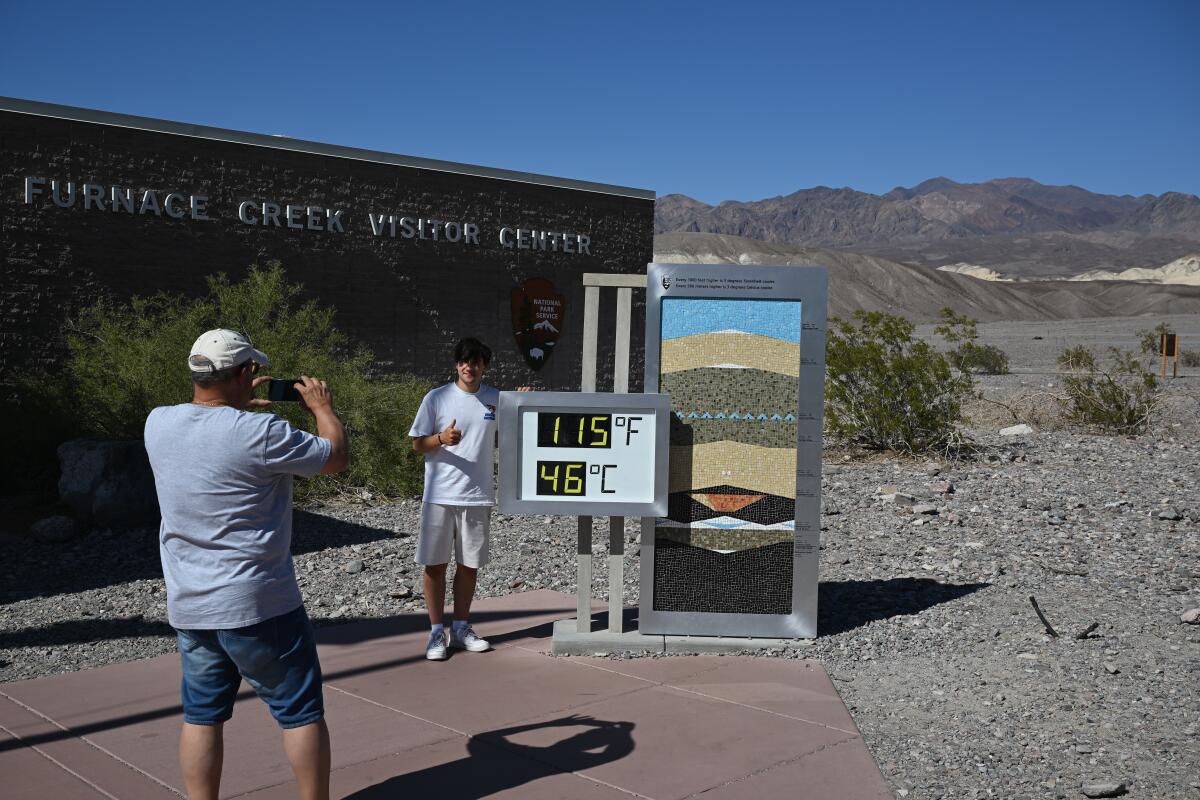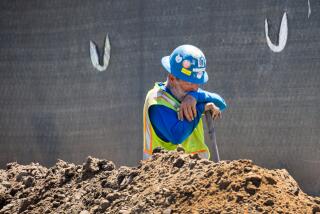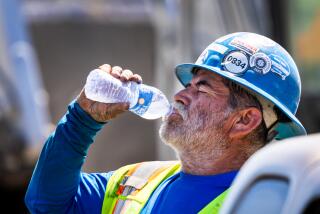Death Valley could see 129-degree high, with low over 100, as California roasts

The heat dome parked over Southern California is expected to spin thermometers to nearly 130 degrees this weekend in Death Valley — where even overnight lows could exceed 100.
Triple-digit temperatures are forecast throughout inland areas starting Friday, including the potential for record-breaking heat.
The highest temperatures are expected in Death Valley, with highs of 128 and 129 degrees expected on Saturday and Sunday, respectively.
Miguel Miller, a forecaster with the National Weather Service in San Diego, said 100-degrees-plus for overnight lows in the area are “kind of rare, but it does happen.”
Inland valley areas throughout Southern California are expected to have the highest temperatures this weekend, including the Antelope Valley, Cuyama Valley, Santa Clarita Valley and Ojai Valley regions. Highs up to 108 degrees are expected Friday and could range from 108 to 113 degrees on Saturday and Sunday.
“We’ve seen such cool temperatures this spring, colder than normal, so this switch might not be very appealing to people,” said Lisa Phillips, a National Weather Service meteorologist with the agency’s Oxnard office.
Despite the high temperatures, only a few areas — such as the Antelope Valley — could break records. Areas closer to the coast, including coastal valleys and mountain ranges, will have highs in the 80s and 90s due to the marine layer.
“The ocean is our air conditioning in the summer,” Phillips said. “If we don’t have enough onshore flow, it affects overnight temperatures.”
Overnight temperatures could be in the 70s to low 80s for many inland areas, offering little reprieve from the triple-digit temperatures during the day.
Phillips warns that the heat wave will cause brief periods of critical fire weather throughout the weekend.
“This type of heat wave is something that dries out the fuels even more, so it could be something that pushes us into more red flag categories,” Phillips said, referring to the most extreme fire weather warning issued by the National Weather Service.
Miller recommended that those living in areas with excessive heat warnings prepare for the worst, such as having a backup plan in case air conditioning stops working and locating public cooling centers in your area.
Forecasts show the heat is expected to gradually decrease by a few degrees starting Monday, though another heat wave could arrive in time for the following weekend.
More to Read
Sign up for Essential California
The most important California stories and recommendations in your inbox every morning.
You may occasionally receive promotional content from the Los Angeles Times.











